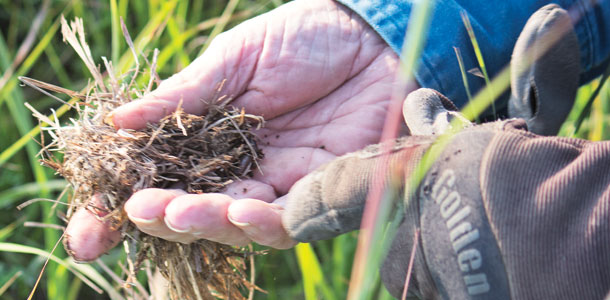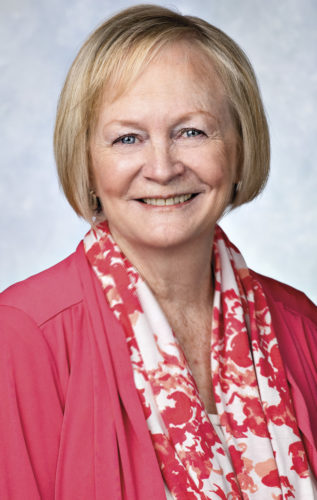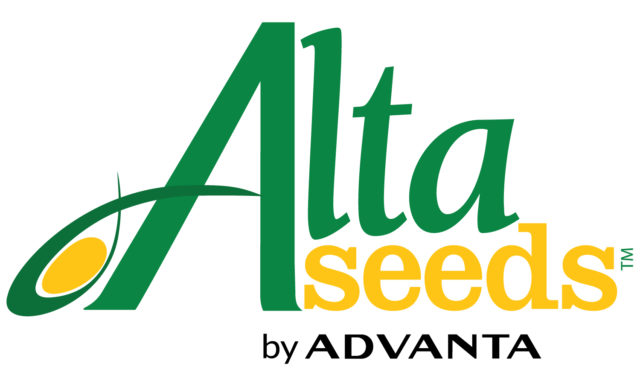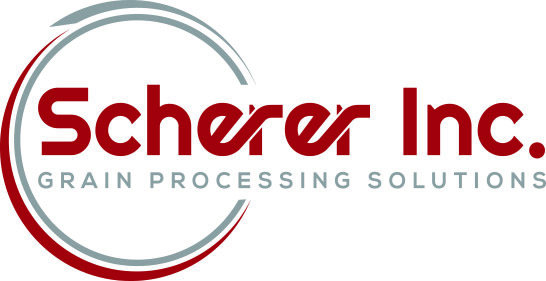Jim and Betty Choquette of Upland, Nebraska, were recently reminded of this when Jim suffered a four-wheeler accident that left him hospitalized for 38 days, paralyzed twice and in rehab for five months.
It took several more months before he could return to a full day’s work moving cows from paddock to paddock, rolling up fence wire and monitoring 150 cow-calf pairs.
Philosophically, it was just one more marker on his lifelong learning curve.
Choquette’s ancestry is French, and he grew up on his dad’s farm. He bought his own first farm as a college freshman, which was near his parents’ farm.
His dad helped with the down payment and co-signed the note, but neighbors and family questioned whether he had used good judgment.
The new farm hadn’t been farmed for some time and was nothing but weeds and short, wiry buffalo grass.
Still, Choquette saw potential. At least he hoped there was potential. One thing was certain – it would involve a steep learning curve.

In 1973-1974, Choquette drilled grass seed into the new farm, but some grass species returned spontaneously without seeding once the weeds were managed.
“There is a seedbank in the soil if you’re patient and let it come back,” Choquette says. Today the pastures boast a bovine buffet of buffalo grass, brome, big bluestem, indiangrass, small bluestem and side oats, along with maybe half a dozen or more other varieties.
In the 1970s, Choquette says, most farms in Nebraska covered about half a section of land, where families raised pigs, cows, chickens and everything else they needed. These small farms covered the countryside.
Cost-share programs helped the farmers create man-made dams to hold rainwater, cross-terracing to prevent erosion and water lines to sustain livestock. The small farms are gone now, and only remnants of outbuildings remain on many of the old home sites.
As time went by, Choquette was able to purchase more land and add it to his family’s original farm. Today, on over 2,000 acres of land, Choquette leases about half to farming and grazes the other half with his Angus and Angus-cross herd.
Restoring the grassland that once covered Nebraska has taken years. On dry years, Choquette fences off south slopes where sun punishes the grass, giving the plants extra recovery time.
 He has also drilled other species in the seed mixes, like sunflower, alfalfa, corn and crabgrass. After that is grazed, he’ll go back in again and sow rye and hairy vetch.
He has also drilled other species in the seed mixes, like sunflower, alfalfa, corn and crabgrass. After that is grazed, he’ll go back in again and sow rye and hairy vetch.
He states, “The more diversity in an area, the better the soil health.” And Choquette maintains that soil health is what it’s all about.
Choquette will watch each seed mixture perform, then adjust and experiment with something new if he thinks he can find another grass or legume that might keep his cows grazing longer and healthier. It’s the learning curve effect.
The only visual breaks in the rolling grasses on Choquette’s farm are hot, single-wire fences. But it wouldn’t be wise for any visitor to take visual coordinates from them, as they’ll move many times a week, sometimes several times a day.
He has such a maze of fencing strung out that his wife jokingly says if he put in any more fences he wouldn’t have any room left for grass to grow.
Choquette gave up on three-wire fencing, saying, “I don’t put in three-wire fences any more because if the cows are riding the fence that hard, then they’ve been there too long and it’s time to change them.”
Driving the cows would be unusual, as the herd is accustomed to frequently changing paddocks and sometimes are waiting at the gate lobbying for new pasture by the time Choquette rearranges the fencing.
When Choquette opens the gate, it’s like watching water flow as the cows simply spill into the new pasture, anxious for the next selection. When I commented about not seeing any hay-harvesting equipment, Choquette simply stated, “My harvesting equipment has four legs.”
Choquette uses in-pasture weaning, a system he learned several years ago. When the calves are ready to be weaned, he installs two panels between paddocks through which the cows will move as they change paddocks.
The panels create a funnel effect where Choquette can quietly and quickly detain the calves in the original paddock as the cows eagerly flow through, knowing from experience that new grasses await.
The paddocks share a small-diameter watering tank, and the cows and now-weaned calves can still contact one another across the tank.
Choquette leaves a babysitter cow in with the weaned calves to help calm them and says the cows are actually more disturbed by the separation than the calves.
However, both are still in paddocks they’re familiar with, eating feed to which they’re accustomed, and the subsequent stress levels are very low.
So low, in fact, that Choquette has been able to stop vaccinating for sicknesses generally associated with weaning and the usual accompanying stress. Choquette says, “Cattle don’t make cattle sick; people make cattle sick.”
Choquette affirms that with the success of in-pasture weaning, he would never return now to the old system. He says it’s easier on cows, calves and cowboys.
Choquette tries to leave 40 percent forage in the field after cows have grazed to provide adequate recovery for grasses and lower soil temperatures.
During the dry summer of 2013, Choquette measured soil temperature on one hot summer day and found that in short prairie grass areas, the soil temperature at a 4-inch depth measured 12 degrees hotter than in areas where there was adequate plant coverage.
At a 2-inch depth, the gap widened to 22 degrees difference, reaffirming to Choquette that the more plant coverage he could leave in the pasture, the healthier the soil would be.
It’s time-intensive to change paddocks as often as Choquette likes, and his system wouldn’t work for everybody, but for him it works. Choquette says, “This is my office. I love it out here. If there isn’t anything to do, I find things to do.”
Nonetheless, to increase quality of life he has learned to plan “vacation paddocks” and “weekend paddocks” that are larger and allow him to be away to enjoy time with his wife and granddaughter.
In addition to the grass paddocks, Choquette will graze corn stubble with cover crops of sorghum, radish, turnip, dwarf essex rape and mung beans. And he’s beginning an experiment with pasture cropping.
It’s just another point on a long learning curve – the learning curve that never ends. FG
PHOTOS
TOP: Nebraska grasslands are being restored by managers who recognize the value of rotational grazing.
MIDDLE: Choquette tracks pasture use on PVC placards using an eartag marker to record rotation dates.
BOTTOM: Choquette measures soil health, in part, by assessing plant litter in his pastures. Photos by Lynn Jaynes.









